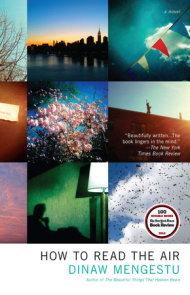READERS GUIDE
Questions and Topics for Discussion
1. Rushdie writes, “Life is fury. Fury–sexual, Oedipal, political, magical, brutal–drives us to our finest heights and coarsest depths.” Consider what he means by assigning all of these implications to the word. How does it play into the plot and characterizations of the novel? Why do you think he chose it as the title?
2.What do you think is the significance of the fact that Fury is set in a very specific place during a very specific, and recent, time? Consider the events Rushdie talks about, the major political and social players who surface throughout the novel, and the name brands, TV shows, and other cultural icons he mentions at regular intervals.
3.Describe Malik Solanka. How does his profession play into his personality? What is the nature of his relationships with others? How does his cultural background inform his character?
4.Discuss how humor functions in the book. Is this a satire? Does the humor render the novel more real or more surreal?
5.What sorts of religious, literary, philosophical, and/or mythical references appear throughout the book? What functions do they serve within their respective contexts?
6.What is the significance of Malik’s creation, Little Brain? He describes it as “first a doll, later a puppet, then an animated cartoon, and afterward an actress . . . a talk-show host, gymnast, ballerina, or supermodel. . . .” Is there something to be said for the process it underwent to become the final result?
7.There are many different subplots running through the novel. How do they relate to one another? How do they relate to Malik?
8.How do love and romance function in the novel? Malik encounters several women throughout the course of the book; what are their similarities? differences?
2. What do you think is the significance of the fact that Fury is set in a very specific place during a very specific, and recent, time? Consider the events Rushdie talks about, the major political and social players who surface throughout the novel, and the name brands, TV shows, and other cultural icons he mentions at regular intervals.
3. Describe Malik Solanka. How does his profession play into his personality? What is the nature of his relationships with others? How does his cultural background inform his character?
4. Discuss how humor functions in the book. Is this a satire? Does the humor render the novel more real or more surreal?
5. What sorts of religious, literary, philosophical, and/or mythical references appear throughout the book? What functions do they serve within their respective contexts?
6. What is the significance of Malik’s creation, Little Brain? He describes it as “first a doll, later a puppet, then an animated cartoon, and afterward an actress . . . a talk-show host, gymnast, ballerina, or supermodel. . . .” Is there something to be said for the process it underwent to become the final result?
7. There are many different subplots running through the novel. How do they relate to one another? How do they relate to Malik?
8. How do love and romance function in the novel? Malik encounters several women throughout the course of the book; what are their similarities? differences?




















